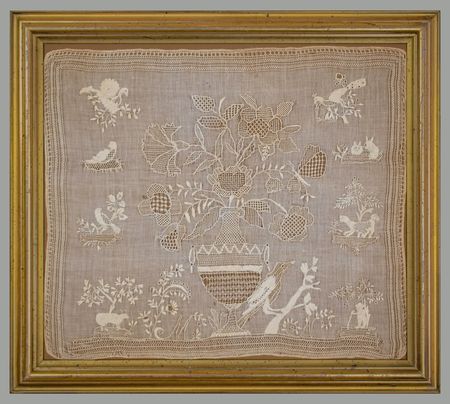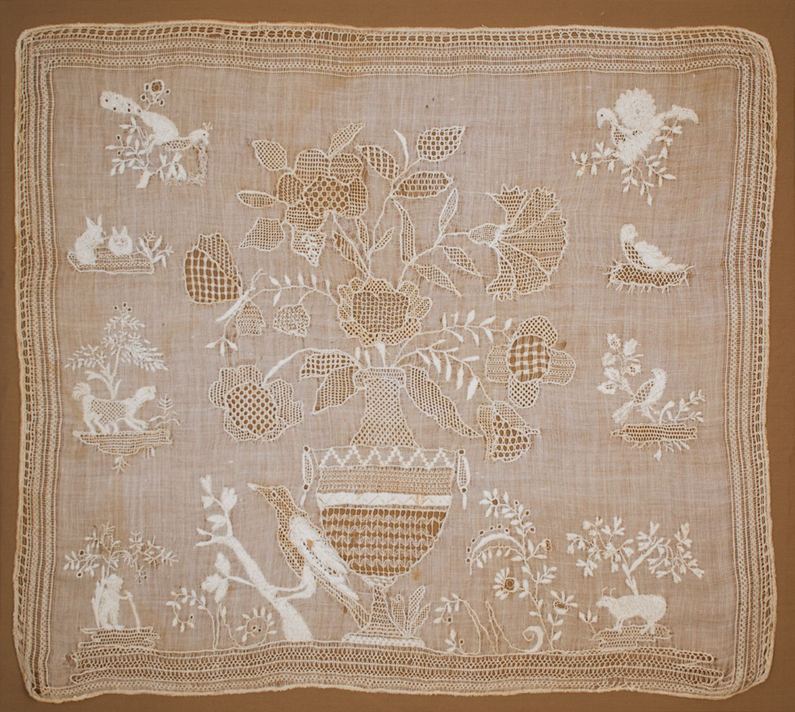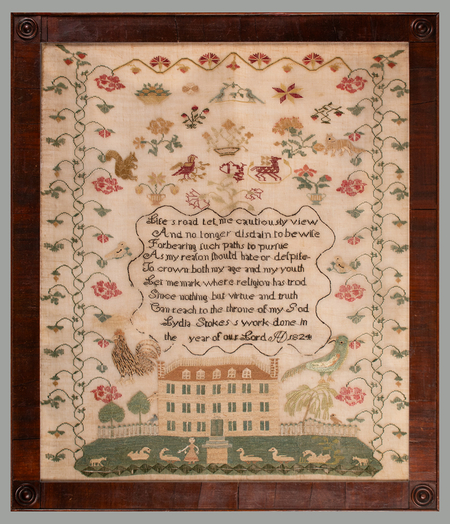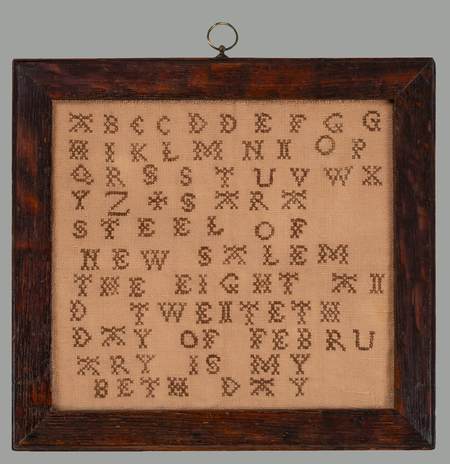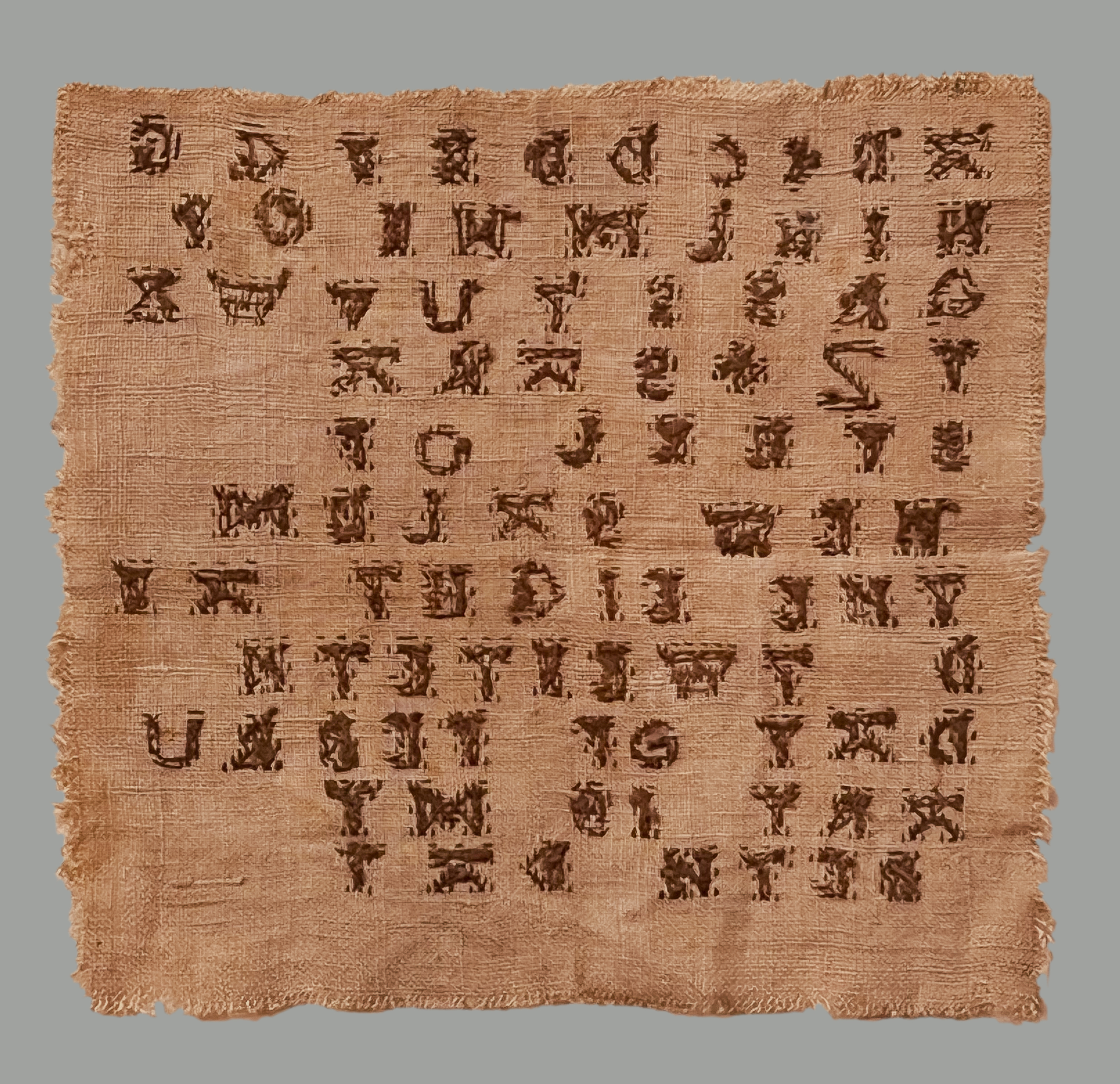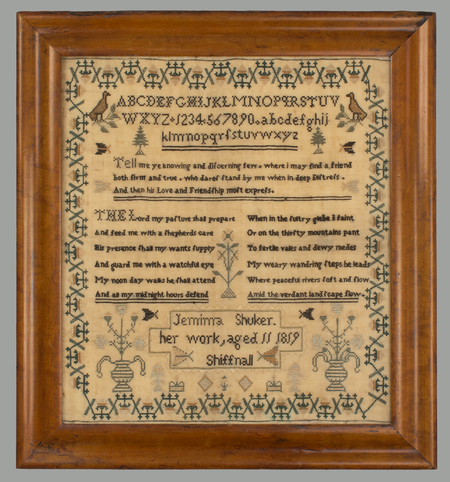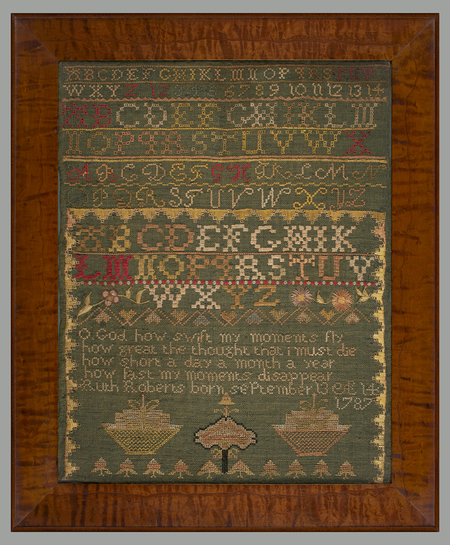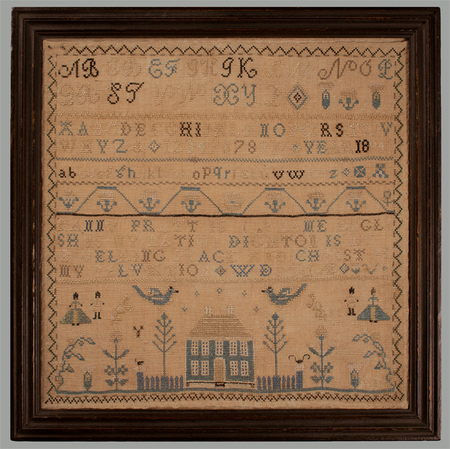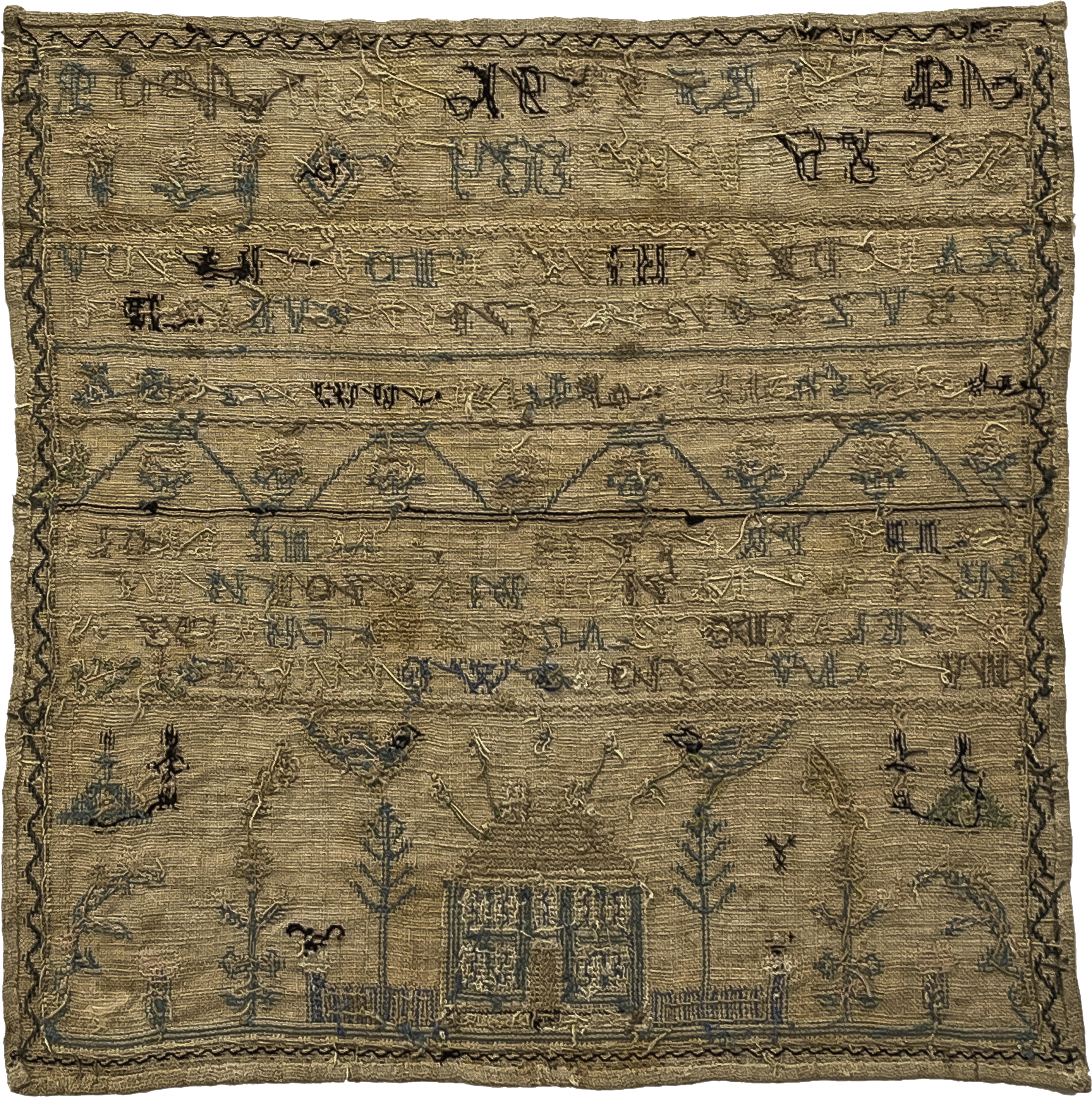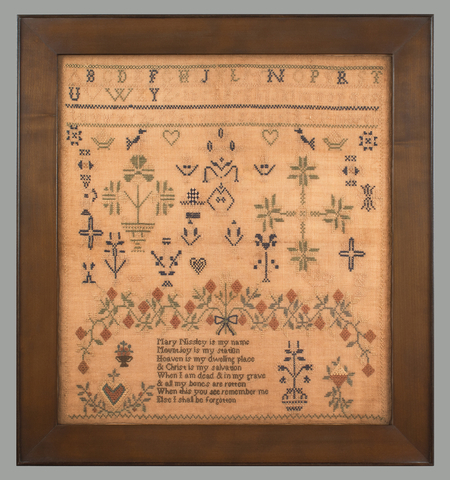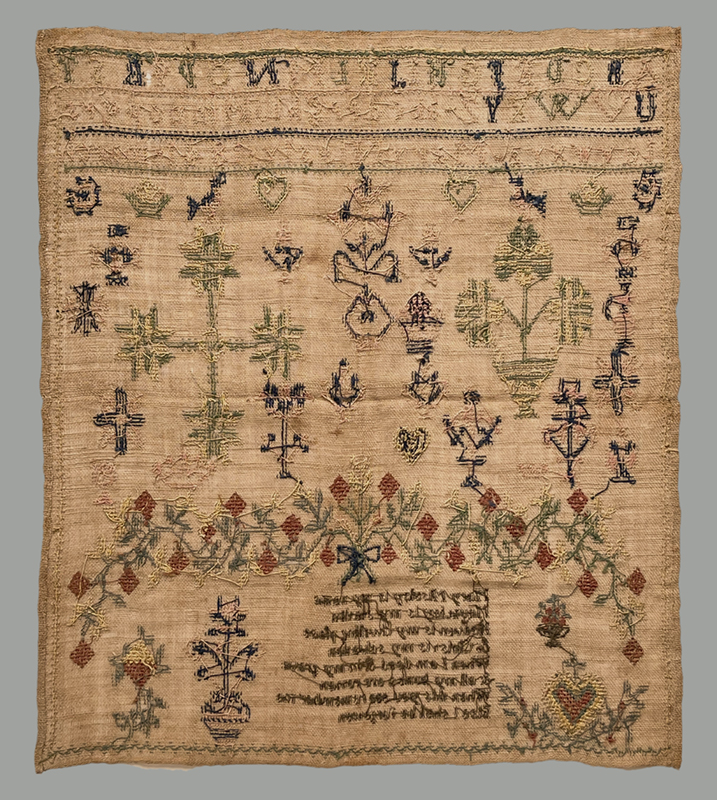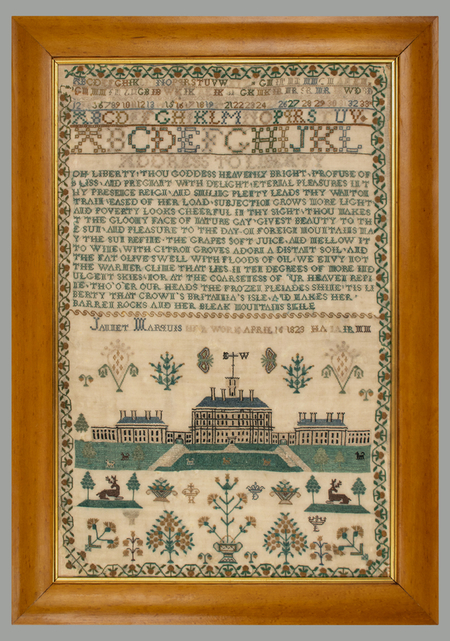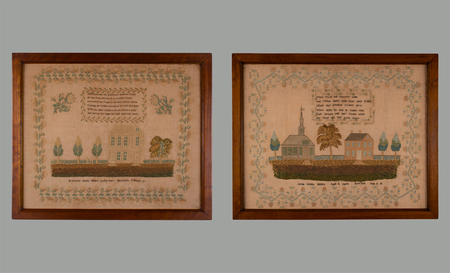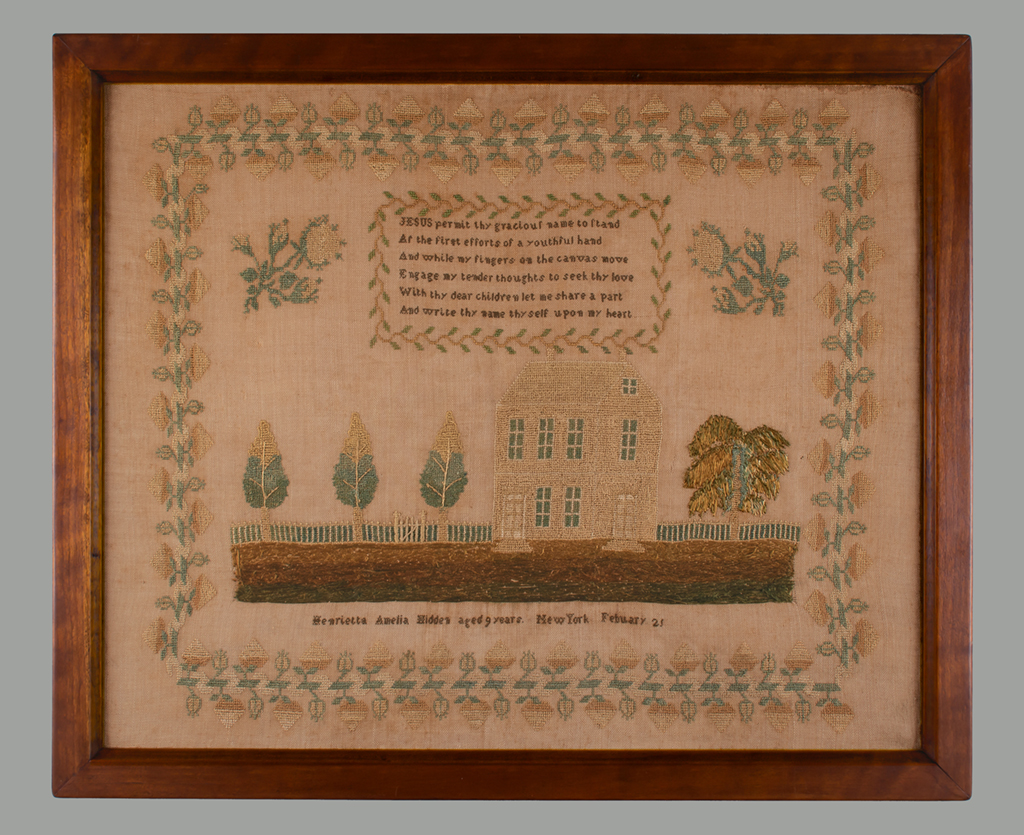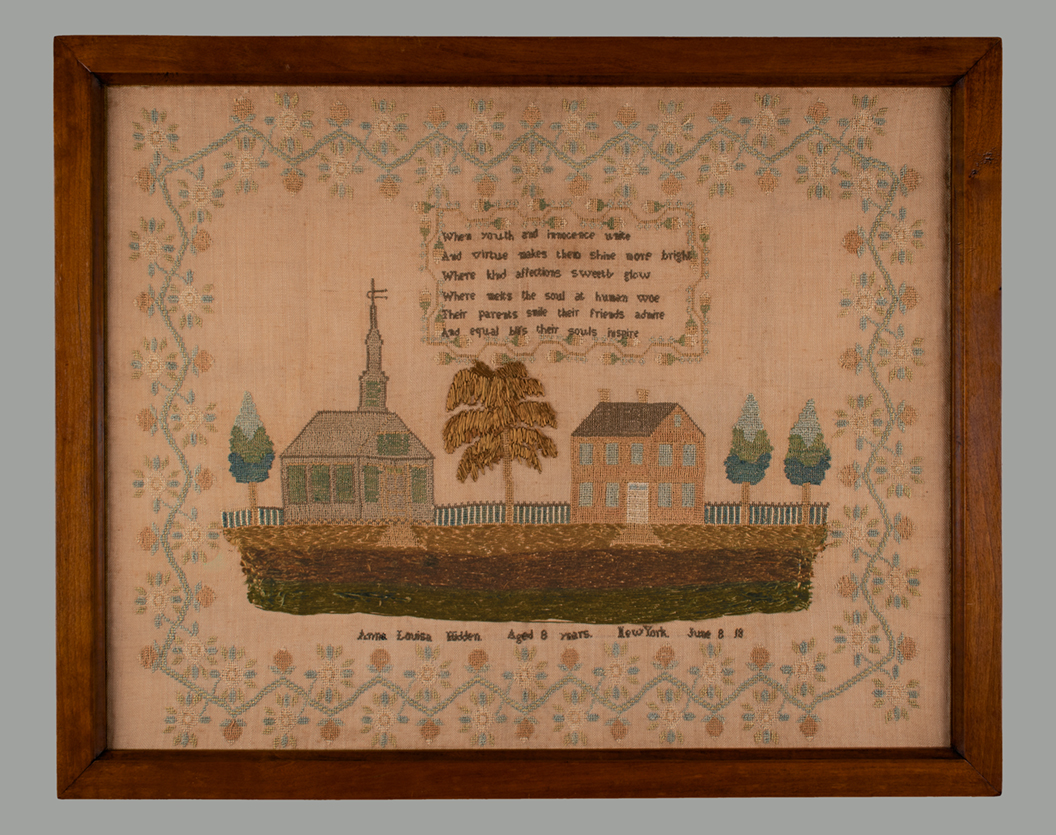Smilinda Wilder
Leominster, Worcester County,
Massachusetts, 1811
Smilinda Wilder
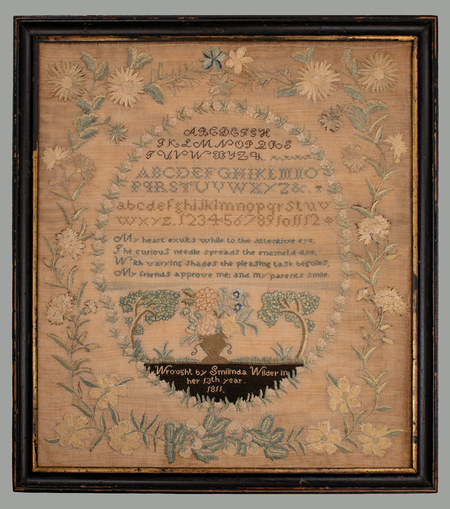
An instructress of considerable skill was teaching girls in Leominster, a town north of Worcester, Massachusetts, for at least ten years beginning in 1806. There are several wonderfully developed samplers that belong to this group and they all share the same unusual and praiseworthy composition and excellent needlework. They feature an octagonal or oval center outlined in a garland of flowers or satin stitched diamonds, surrounded with a very lovely border of flowers on leafy vines. Each of the makers inscribed their work in a solidly stitched panel.
The group includes Martha Lincoln’s 1806 sampler that was in the Theodore Kapnek Collection and illustrated as figure 52 in A Gallery of American Samplers: The Theodore H. Kapnek Collection by Glee Krueger (E.P. Dutton, New York, 1978). And a sampler made by Laura Murdock in 1816 was published by Mary Jaene Edmonds, in Samplers and Samplermakers: An American Schoolgirl Art 1700-1850 (Rizzoli, New York, 1991).
Another of these excellent samplers is now available, made by Smilinda Wilder, age 12 in 1811. Her needlework is very fine and the pictorial composition is outstanding - the vase of large flower blossoms flanked by leafy trees that bend into it. We love the detail of the vase’s curly handles. The verse, with its focus on the making of the sampler itself, is especially appealing, “My heart exults while to the attentive eye / The curious needle spreads the enameled dye / With varying shades the pleasing task beguiles, / My friends approved me; and my parents smile."
The Wilder family of New England began with Thomas Wilder, who was born in Oxford, England in 1618 and died in Lancaster, Massachusetts in 1667. The family remained in that area of Worcester County for generations. Smilinda Wilder was born on May 2, 1799, the third of twelve children of Peter (1765-1855) and Sarah (Joslin 1765-1845) Wilder. The family had a farm in Ashburnham and then Leominster, which remained in the possession of descendants for generations. Smilinda married Dr. Silas Bruce and died very young, in 1826 at age 27.
The sampler was worked in silk on linen and is in excellent condition. It has been conservation mounted and is in its original painted frame.



